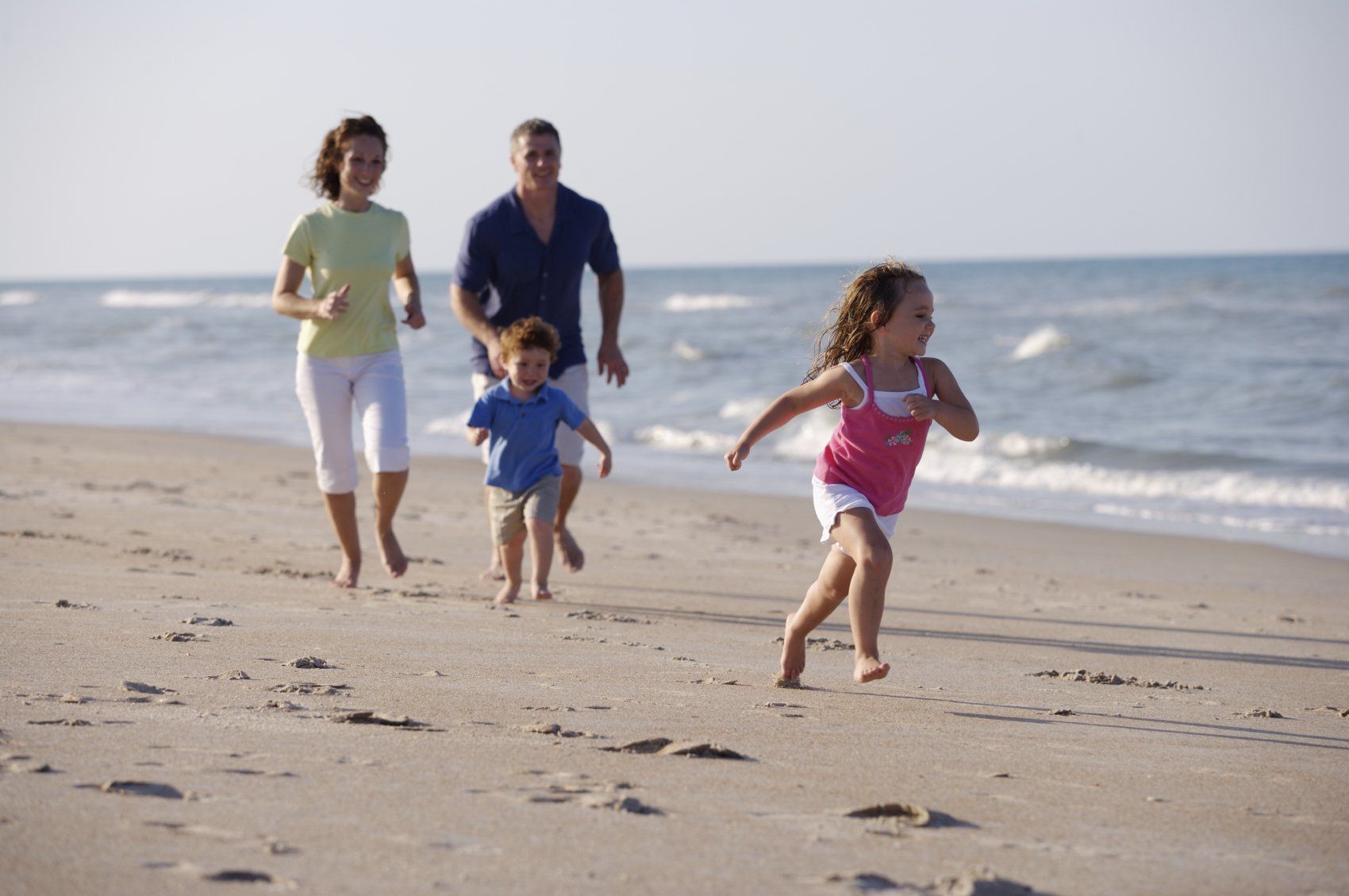Shoulder and Neck Exercises
Daniela Stoeffin • 11 October 2021
This is a video with a few exercises to help loosen up your shoulders. They are useful if your muscles are tight from sitting at a desk a lot or if you've been carrying something heavy, after gardening, etc.
Doing the arm circles with the elbows bent as in the video is usually easier (less painful) if you've had a shoulder injury. I've put this version in because a lot of patients feel pain when they try lifting their arms to the ceiling or doing wide circles. You can of course do wide arm circles :-)
Please don't do anything that hurts or feels uncomfortable, these exercises are not meant to replace treatment. If you have any questions, please contact me or another practitioner.

Our body is an intricate system of bones, joints and muscles that allows us to move, lift and carry, and go about our daily lives. I sometimes get asked why I don’t just work on the muscles to reduce pain or make you feel better. The answer is that the muscles are just one part of this movement system. They can become tight and achy after being overworked but they also respond to restrictions of other parts in the movement system. If your shoulder has restricted movement and you’re trying to lift the arm, your muscles have to work against this resistance and will become tight and painful. The same can happen with postural restriction, eg if your pelvis is out of alignment your spine and upper body will respond and the muscles in your back and neck will not be able to function properly. Think of a mast that is held up by ropes. If you tilt the mast, some ropes will become slack while others will become tight or might rip from the strain. The joints can also suffer directly if there is a misalignment. The cartilage in your joints will be under stress and become damaged. Osteopathy includes different types of techniques that address postural imbalances, restrictions of your joints, and muscle tension. Most people feel better after a treatment but your body might need some time to adjust to the changes. Drink plenty of water or fruit juice and spend some time outside if possible.

Our body is not just made up of bones and muscles, our organs are vital parts of our body and important for our health and wellbeing. Visceral osteopathy includes different techniques for treating the organs (viscera) of the body, eg the digestive tract or lungs. Our organs have some inherent movement that helps their function, and they are covered by tissues that contain nerves, arteries, veins, and lymphatics. A certain amount of gliding between these tissues allows the organs to do their work and keeps them healthy. If there is a restriction, eg scar tissue after surgery or after an illness, the normal function can be impaired. Visceral osteopathy can help restore normal function, or support function if there is a more severe chronic condition, and improve health. Please note: 🩺 Visceral osteopathy is a form of manual therapy and does not replace necessary medical treatments like surgery or medication

How does Cranial Osteopathy work? The brain is covered by three layers of membranes that create a nourishing and protective environment. They have attachments on the bones of the skull. These bones are not one solid container as you might think but there is some very subtle movement possible where they join together during development and growth. This subtle movement can be restricted (similar to a bigger joint like your shoulder or hip) through bumps, falls, or emotionally difficult experiences. The affected area of the skull will feel compressed or tight. Why can this cause pain in my neck or back? The membranes covering the brain also cover the part of your nervous system inside your spine - the spinal cord - and extensions follow the nerves leaving the spine to go into your arms and legs or other areas of your body like the internal organs. If there is a strain or pull through this membraneous system, it can irritate the nerves and impair blood supply, and venous and lymphatic drainage. This can result in reduced oxygen supply which your cells need to function, and a build up of waste products. What do you do when you have your hands on my head or lower back/pelvis? Cranial osteopaths can feel restrictions or strains and help the body resolve them. This improves the subtle movement between the bones and balances the membranes. The gentle work we do also directly influences the movement of the fluids in the body, the cerebrospinal fluid, blood flow and lymphatic drainage. It can feel like an unwinding, an opening or softening, increased warmth, and patient sometimes describe it as feeling lighter. Most people feel better after a treatment but your body might need some time to adjust to the changes. Drink plenty of water or fruit juice and spend some time outside if possible.

Birth is an important experience for mum and baby and what happens around this time does have an impact on how well baby settles and feeds. If the birth is very fast or difficult this can affect the baby’s normal responses and create tension in the body. The lungs, digestive and immune systems are all still developing and undergo big changes in the first few weeks and months. Twists around the diaphragm or strains involving the cranial base can cause discomfort for the baby and make it difficult for them to settle. If the baby is constantly tired or irritable it will be more difficult for them to feed and sleep. Reflux can cause pain and make it uncomfortable for baby to lie on their back. The same can be true for tension around the spine and pelvis. A restriction in movement of the spine or pelvis and hips can make it difficult for the baby to turn their head to the side, tension around the pelvis or hips can affect digestion and developmental steps like crawling and walking. Cranial osteopathy is very gentle and can help resolve strains, balance the nervous system and calm the tissue response. Gentle balancing of the joints can improve alignment and movement.

Why does osteopathy complement physical exercise? If you’re exercising but there is a problem with the movement or alignment of a joint this can cause damage or pain, or simply make you less flexible or unable to do certain movements or get into a position, eg sitting on the floor comfortably. Osteopathy can help by improving mobility and balancing muscle tone and alignment of your whole body. Have you noticed that your lower back is hurting after walking or gardening? This can be due to you using muscles you don't normally use, wear and tear, or a restriction in your facet or sacroiliac joints. Are you prone to twisting an ankle or does one leg feel different when you are sitting with the legs crossed or stretched out on the floor? Does one side of your body feel more flexible than the other? This can be due to restricted movement, which reduces ligamentous support and changes the position of a joint. It also makes the muscles work harder against the resistance when you're moving which can over time lead to pain and injuries. An imbalance in the curves of your spine (scoliosis - the spine having a curve to the side, or increased/decreased lordosis - more or less curve in your lower back) can also cause pain or difficulty doing certain exercises. I can do an assessment of your posture, movements and how you are using your muscles and give you tips on what to improve. This can be through treatment, changing the way you exercise, or adding some targeted stretches or strengthening exercises. Have you considered regular MOTs? A lot of athletes and professional sports people get regular treatment to improve their performance, and prevent injuries or help their bodies heal. If you are active and enjoy sports and exercise MOTs are a good investment.

Good sleep, falling asleep quickly and waking up refreshed, is important for our health. If we struggle finding rest and go to sleep, maybe because of pain or because we have constant thoughts going round our brain, we miss out on important phases in our sleep pattern. Our bodies go through different phases when we sleep and deep sleep is important to feel rested when we get up. Some nights without enough sleep are usually not a problem, but if this continues for a longer time our body’s metabolism can change and we use more of our energy storages. The balance between the different parts of the nervous system can also change and we can exhaust the adrenal system, which means we are more tired and irritable. This can affect how we deal with everyday situations, making us react more intensely to situations we would normally not bother about. It can also be more difficult to find the energy to exercise or go out and meet people, just because we’re feeling low and tired. How can we improve our sleep? There are a lot of things that can help, these are some examples that you can try. Don’t try to force yourself to go to sleep, try to relax and enjoy just lying in your bed. If you are in pain a pillow under or between the knees can help. Concentrate on your breathing and try to let your breaths become a bit longer, maybe counting to 5. If you had an emotionally traumatic experience it can be difficult to relax, because your body associates letting go of control with danger. The moment you are about to fall asleep your body jostles itself back to alertness. In this case it can be helpful to practice relaxation in a controlled environment, e.g. using Jacobson’s muscle relaxation or body mindfulness techniques. Spend some time outside every day, as this will reset your body clock and melatonin system. Try to not eat too much or drink a lot of alcohol for the last two hours before going to sleep. It can help to go to sleep around the same time and set an alarm for the same time every day for a while so that your body develops a routine and resets its inner clock. If you are travelling a lot or working shifts it is difficult for your body to stay in balance. Spending some time outside and trying to follow a normal activity pattern as well as drinking enough water and avoiding comforting fatty/sugary meals can help. The latter as well as caffeinated drinks can help you feel alert for a while but over time they will exhaust your body’s energy levels even further because they’re just mimicking what your body really needs – rest and healthy food. Almonds, raisins, and a glass of water or juice can be a better alternative if you need a quick energy boost.

Exercises to keep your back healthy Lie on your back - on the floor if possible, or on the bed. You can use a pillow under your head if that feels more comfortable. If you feel pain or discomfort doing these exercises, please don't do them. Knee hugs Bend both knees, feet on the floor and about hip width apart. Bring both knees up to your chest and hold for a few breaths. Then place both feet on the floor again. Bring one knee up to your chest and hold for a few breaths. If your back is not arching off the floor, you can also extend the other leg. Switch sides. Pelvic tilts Bend both knees, feet on the floor, hip width apart. Roll your pelvis up slightly so that your buttocks are lifting off the floor, then do the opposite, slightly arching your back. Relax your shoulders so you can feel a gentle movement through your whole spine up to your head. Breathe, don’t hold your breath! A few times Bridge Roll your pelvis up and continue lifting your spine until you only have your shoulder blades touching the floor. Then roll down again. If it feels ok, stay up for a moment on the last rep to improve strength in your gluteal and posterior leg muscles. Keep breathing normally! 6 – 10 x Leg Raises sidelying Lie on your side with the lower leg bent, the upper leg straight. Lift the upper leg to hip height, then slowly lower it down again. If it feels ok, hold the leg up for a moment on the last rep. This exercise helps improve strength in your core, gluteal and leg muscles. Keep breathing normally! 6 – 10 x Cat/Cow On all fours, hands under the shoulders, knees under the hips. Bend your head and look at your belly button, drawing your belly in slightly, then look up and arch your back, letting your belly drop to the floor. Avoid looking up too much, hyperextending your neck! 6 – 10 x Flight Lie on your belly, forehead on the floor. Have your hands next to your hips, palms facing up. Breathe in and lift your forehead, shoulders and arms, breathe out and relax everything back down. You can stay up for a few breaths on the last rep if it feels comfortable. Avoid looking up too much, hyperextending your neck! 6 – 10 x If you have any questions, please let me know. Daniela Stoeffin Osteopath 07470984853 daniela@dsosteopath.co.uk

If you have been suffering from headaches for more than a few months, they will be classed as chronic. The headaches can be constant, or you can have episodes lasting from a few minutes to a few days. The membranes surrounding your brain and nervous system can hold tension from physical impacts, a longer illness, or emotionally difficult events. They are innervated by nerves originating in the head and the neck and if there is reduced mobility this can cause an irritation of these nerves and cause headaches. Reduced drainage from the head related to a reduction in movement, increased tension of the membranes and muscles can be another pathway leading to headaches. An osteopath can do an assessment of your neck and cranial membranes for strains that can be causing the headaches. Sometimes these are related to a bump or fall on the head in the past, a car accident, or a difficult birth. Osteopathic treatment can help reduce or release these strains. Important to note: The above refers to ‘ordinary’ headaches that have been more or less the same over a longer period. If you are suffering from new headaches that are progressing in intensity, especially if they are accompanied by other symptoms like nausea or vision changes, tiredness, weakness in your arm or legs or difficulty speaking, your face looks different on one side, or you are feeling uncertain and something feels wrong, it is important that you call your GP or go to A&E as soon as possible as this can be a sign of a bleed, blood clot or tumour.

If your life is very busy it can be difficult to find the time to do something for yourself – Maybe some of the below can be some inspiration or a first step 1 Exercise should be fun – find something you like doing 2 Spend some time outside – greet the day with a short walk, spend your lunch break outside, meet people for a walk instead of sitting inside 3 If you struggle walking longer distances – don’t worry, walking 10 minutes regularly is good for your cardiovascular and mental health 4 Exercise at home – walking up and down the stairs is good to bring your heartrate up, use a standing desk instead of sitting the whole day 5 Add a few vitamins to you diet – your favourite fruit or a juice 6 Starting the day with a warm breakfast can help if you feel very tired in the morning (e.g. porridge with some nuts and fruit) 7 Add some quiet time – just 5 minutes for breathing exercises or a short meditation can help you switch off 8 If you don’t like exercising alone – think about joining a class or ask a friend if they would like to join you 9 Bring a refillable bottle to work or on walks, this is good to keep you hydrated during the day and helps the environment 10 Spend some time without your phone, TV or a book – start with a few minutes – do you find this difficult?

Our bodies go through a lot of changes during the course of our lives. There are phases of transition where our hormonal system changes, and these changes are not always easy and without symptoms. We can experience pain, discomfort, increased or different to normal emotional reactions, headaches, hot flushes, and our bodies might not feel right and uncomfortable. Some of these symptoms can be related to structural problems and in these cases osteopathy can be helpful. Injuries, structural imbalances, or restricted movement caused by scar tissue can influence how we feel and how well our organs function. During an appointment we can look at how osteopathic techniques can help balance your body and ease restrictions to movement, blood supply or drainage to support your health and wellbeing. If you have any questions or would like to make an appointment, please call or write me an email.
